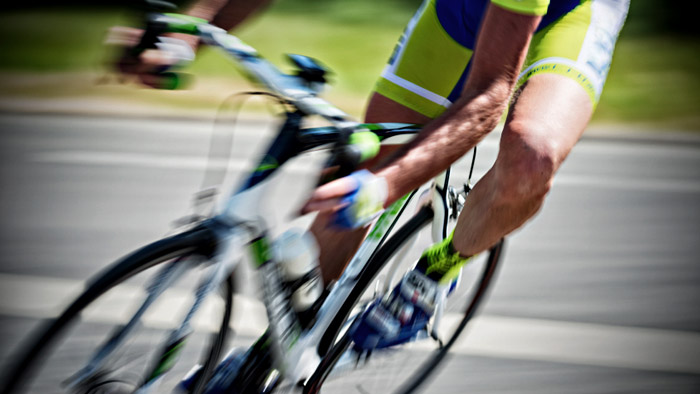All competitive cyclists strive to improve performance. As fitness increases, an increase in the volume and intensity of training is common and necessary. It is no secret that to make gains in speed and fitness on the bike, pushing your limits while training is needed. But how far beyond your limits do you need to train in order to see or feel fitness gains? Training with high levels of fatigue too often can easily cause you to overtrain, something no one wants to experience. However, training within your limits too often may help you maintain current levels of fitness, but it will not provide the stimulus needed to elicit strength gains from the body. In order to make consistent gains in fitness, you need to train slightly beyond your limits, known as functional overreaching.
The Concept of Functional Overreaching
Functional overreaching is technically the very first stage of the overtraining syndrome. Unlike a full blown overtrained state, where it takes many months to years to recover, functional overreaching is defined by short-term decreases in performance, from several days to weeks. It is basically training really hard and resting really well and is considered to be a normal part of the training process by many. Achieving the right balance is hard to achieve consistently without knowing your limits.
How Far To Overreach
The hardest part about overreaching is determining how far you need to go to overreach but not overtrain, and how often you can handle this amount of training. Part of the answer lies in your results from races and/or power numbers. Your power numbers from a race or training will show you precisely if a gain in strength and speed has taken place. There are no set rules on how to overreach. It takes pushing physical limits with both intensity and duration, knowing when you have reached those limits, and then knowing how to recover, as well as when you are fully recovered. The following are a few scenarios you may encounter while learning how to overreach:
- If you have truly overreached, and recovered properly, you will see an increase in speed, endurance and/or power numbers, typically within one to two weeks.
- If you do not see increases in fitness after a few weeks, but you are maintaining similar power and speed, then you may not have overreached.
- If you are experiencing higher levels of fatigue for longer than two weeks, along with sub-par power and speed numbers, then you may have overreached slightly too far.
Knowing When You’ve Over-reached
If an athlete continues to train with greater intensity and volume while in an overreached state, nonfunctional overreaching can occur, requiring many more weeks or months for full recovery. So, it is important to know when you are reaching your physical limits. Higher perceived exertions, combined with lower power outputs and non-responding heart rates are signs of overreaching1,2. While decreases in performance and power can happen, they don’t always, especially for highly trained athletes who can maintain high power outputs late in a training period. Along with performance and perceived exertions, it is also important to study your mental state or mood. Slight irritability, lack of focus, and a lack of motivation are all signs of an overreached state.
Recovery
Knowing how to recover in general is important, but is especially important when you have just finished a super hard block of training. A reduction in training volume and intensity must take place for at least a week or longer if you’re still experiencing greater mental and physical fatigue. Starting the recovery week with a few days completely off from exercise, followed by a few days of easy zone 1 spinning, will allow for good recovery to happen in a short period of time. Total volume of hours for a recovery week should be in the range of 50% of your average weekly training hours or less if needed. If an athlete is recovering quickly, then it is common to see motivation, good feel and strong legs come back by the weekend of the recovery week. Even with good feel, responding heart rates, and good power outputs, we may not see increases in power and speed until the following week or weekend of training.
Proper Timing
Timing is critical when using overreaching in training. If you push the limits too close to a big event, you are essentially rolling the dice to whether you will recover in time and feel good for that event. A two to three week window of reduced volume will allow you to focus on recovery and peak for the event. Earlier in your season, especially during your build periods, you can aim to overreach more often. You have more time to adjust training with more recovery if needed and to learn your limits with training stress. You can also use early season races as training. Training hard going into them will help you achieve an overreached state easier than training can alone. Just be aware of how much training stress you are experiencing at all times and rest when needed.
Pushing the limits in training is a necessary evil. It feels good to be strong on the bike, but the only way to get stronger is to push to the point where you feel weak and tired. Knowing exactly where that point is so you can stop training, rest, and recover is going to change depending on your level of fitness and it is very individual. There are no set rules for it so you must learn through trial and error and take good notes. Looking back through your notes and files when rested allows you to see exactly how you were feeling when fatigued. Learn how to push your limits, but more importantly, learn how to not push them too far.
References
Coutts, A.J. et al. (2007, April 26). Practical tests for monitoring performance, fatigue and recovery in triathletes. Retrieved from https://pubmed.ncbi.nlm.nih.gov/17466593/
Halson, S.L. & Jeukendrup, A.E. (2004). Does Overtraining Exist? An analysis of overreaching and overtraining research. Retrieved from https://pubmed.ncbi.nlm.nih.gov/15571428/

